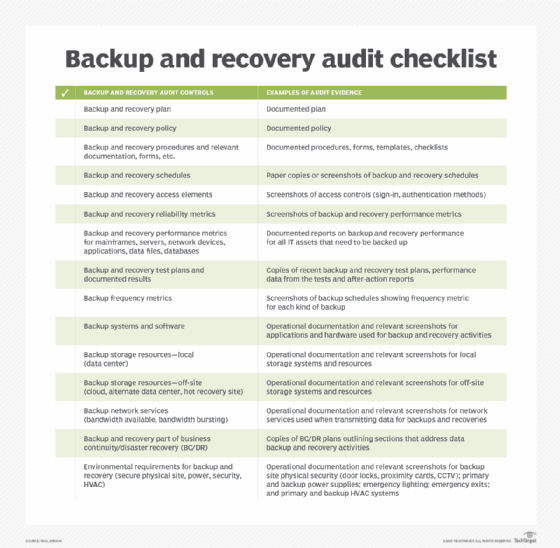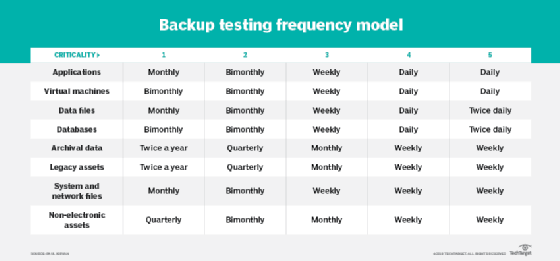
kentoh - Fotolia
Top 3 backup and recovery requirements for data protection
Data protection teams are responsible for some of an organization's most critical activities. The right policies, testing and technologies are key to a backup and recovery plan.
Data protection is one of the most essential activities in IT, and data backup and recovery are its key components. Following a few key backup and recovery requirements will help ensure that resources are readily available and that data protection activities are safe and secure.
Data protection activities must be repeatable and accessible for IT members outside of the data backup team to perform if necessary. Organizations with well-documented policies and procedures, proper configuration of backup and recovery technologies, and regular testing of backup and recovery activities bolster the reliability of a data protection program and prepare the organization for potential IT audits.
Below, we detail the top three backup and recovery requirements for data protection teams.
Policies and procedures
The first, and probably most important, requirement is to have documented policies and procedures for backup and recovery. While many IT employees responsible for backup and recovery could perform those tasks blindfolded, documented procedures provide an additional level of comfort and confidence to IT departments, especially if the designated backup and recovery team members are unavailable.
Experience with the COVID-19 pandemic has underscored that anybody can contract and be put out of commission by an illness. Anyone in an IT department could suddenly be unable to work. Even if members of a general IT department have prior experience in data backup and recovery, access to documents with the procedures clearly spelled out means virtually anyone can perform data backups and recoveries.
Data backup and recovery policies do not have to be as specific and granular as actual procedures, but their presence is important from an audit perspective. Policies demonstrate that the organization takes data protection seriously, and especially backup and recovery, both of which are critical elements in corporate business continuity and disaster recovery programs.

IT auditors typically look for documented evidence of policies and procedures. It is important -- from both audit and operational perspectives -- to regularly review and update policies and procedures to ensure they accurately describe how to perform data backups and recoveries.
Technology
While policies and procedures are perhaps number one among backup and recovery requirements, access to the most relevant and cost-effective technologies and associated resources is also critical. These include software applications and data storage repositories.
Backup software applications are integral components of an organization’s efforts to protect the business from data losses, corruption and thefts.
Data backup and recovery software applications help identify the following:
- data files, databases, and critical systems and applications;
- criteria for backup and recovery;
- locations of the data and system backups;
- data backup schedules;
- backup verification; and
- data, application and system recovery processes.
Applications can reside on local servers or at alternate locations, such as in cloud storage. Backup storage locations can be on or off site.
Testing
Testing data protection activities is last, but not least, in this list of key backup and recovery requirements. In addition to regularly scheduled backups and emergency backup activities, scheduled tests of backup and recovery activities are essential. Backup tests must ensure that data an organization backs up is in place at the designated storage location. More importantly, tests ensure that the backed-up data is the same as the primary data assets.
Testing ensures that an organization performs security measures, such as encryption when data is in transit, as needed. The organization must also test to ensure that it can decrypt and validate the data. This is just as true with systems and application backups: They must be secure, uncompromised and frequent.

Periodic tests of data recovery capabilities ensure that the company's information resources are available and are accessible quickly in an emergency. While organizations can perform data backup tests almost daily, based on the frequency and types of backup activities, data recovery tests can be scheduled at periodic intervals, such as monthly, semimonthly or even weekly.






